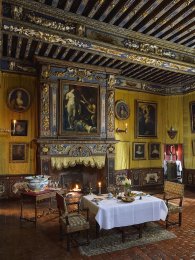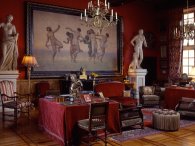The chateau apartments
The ‘Gilded Rooms’, an exemplary splendor
The ‘Gilded Rooms’, created in 1627-1628, are ‘a major source of our knowledge of French decor in the first half of the seventeenth century’ (Alain Mérot).
The quality of the owners, close to the Queen Mother Marie de Medicis and the circles of Parisian Preciousness, give these apartments an exemplary character, and they can evoke the vanished splendor of Paris hotels in the Marais or Louvre quarter.
 Fr
Fr  En
En 







